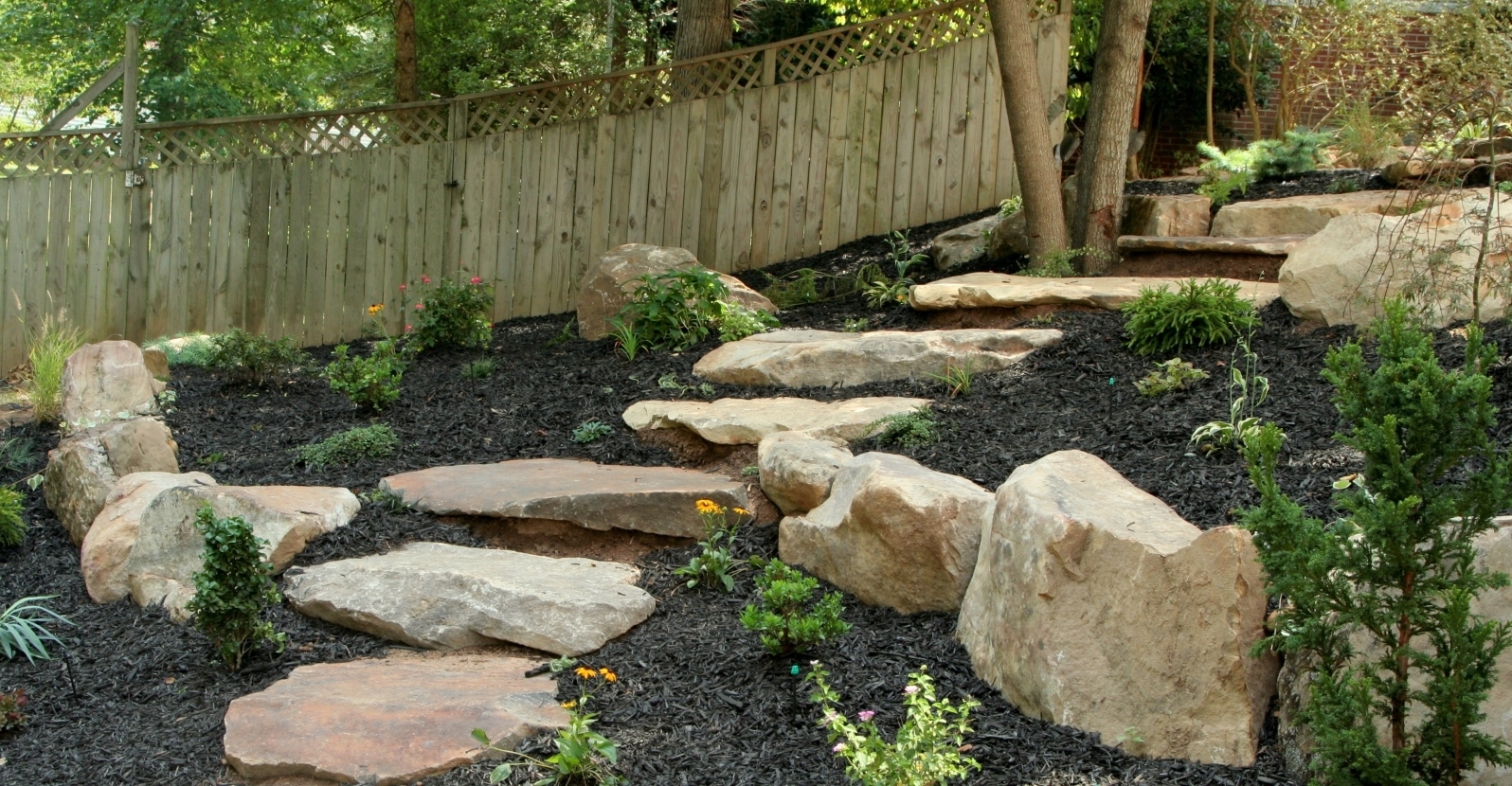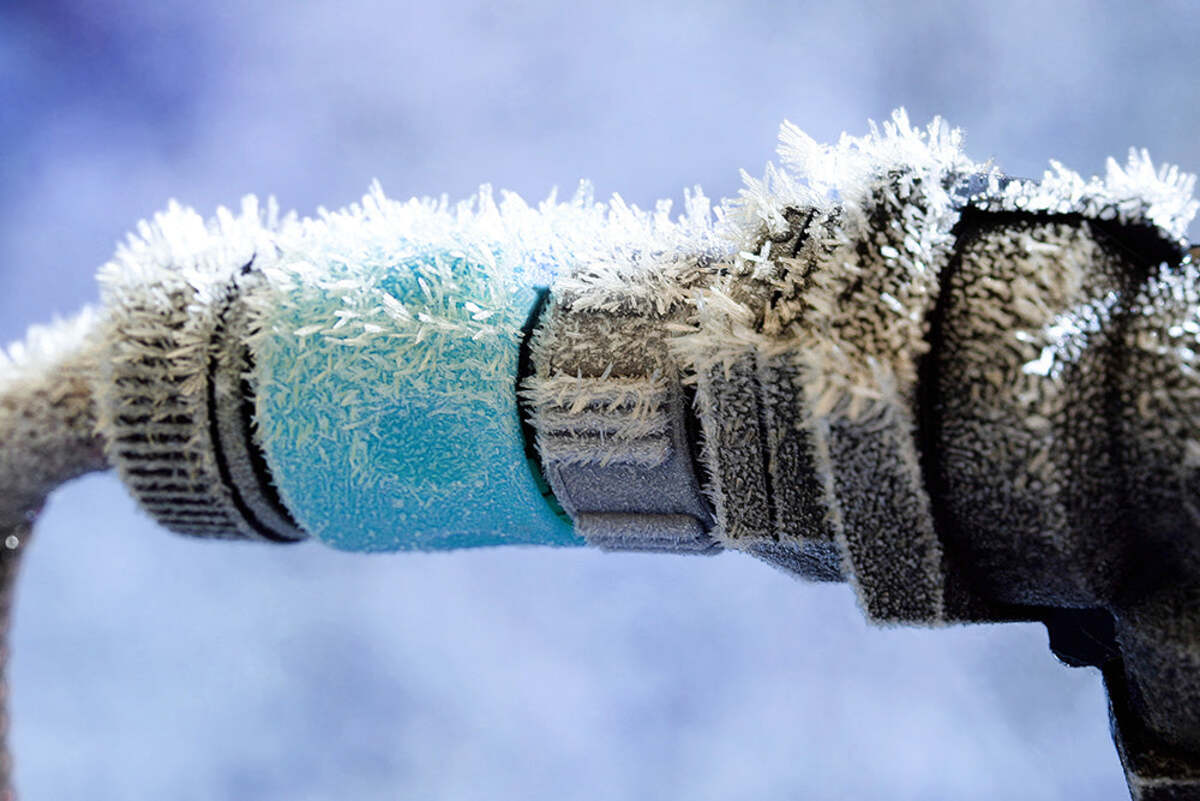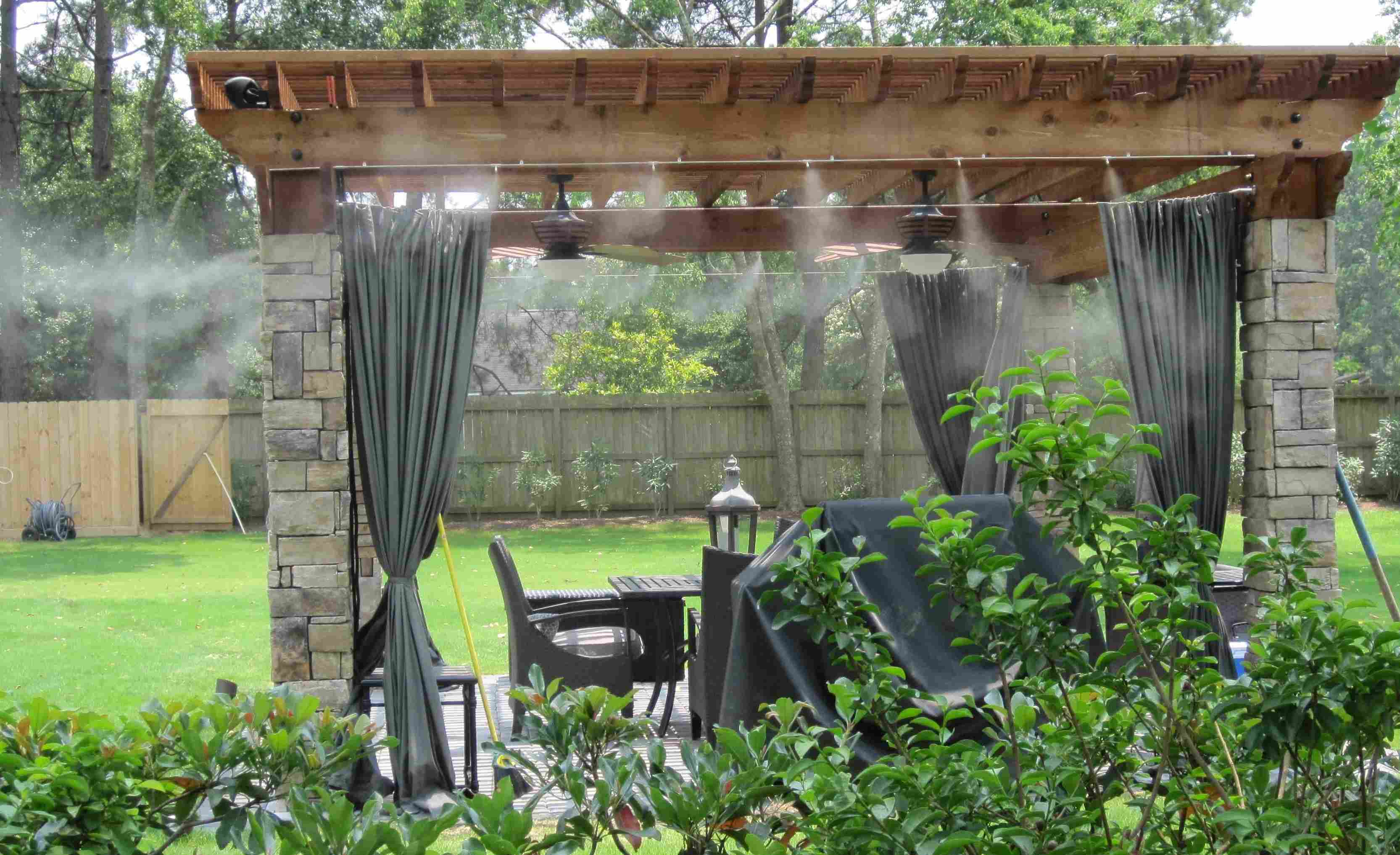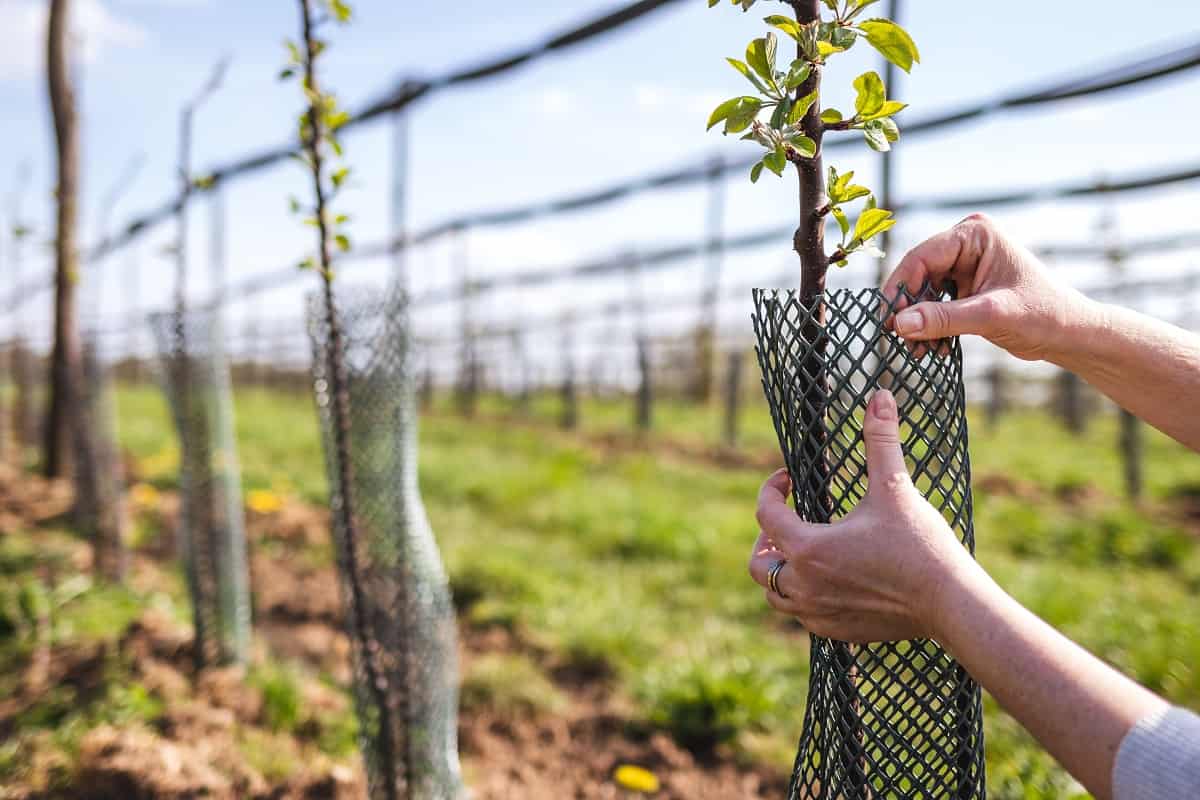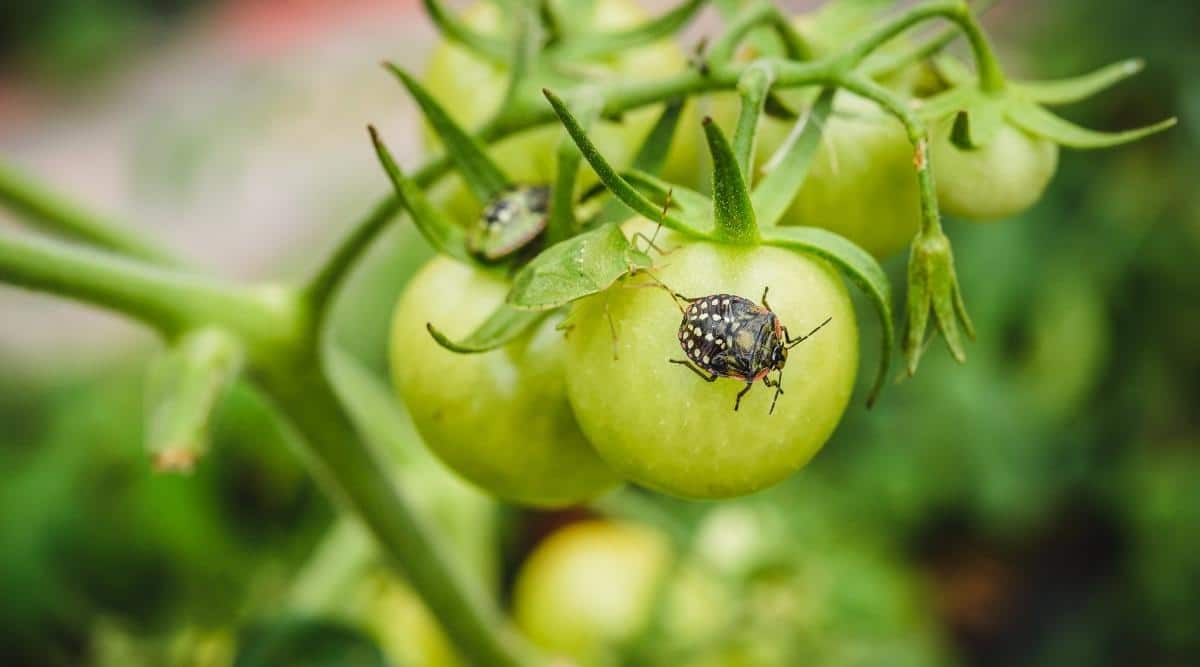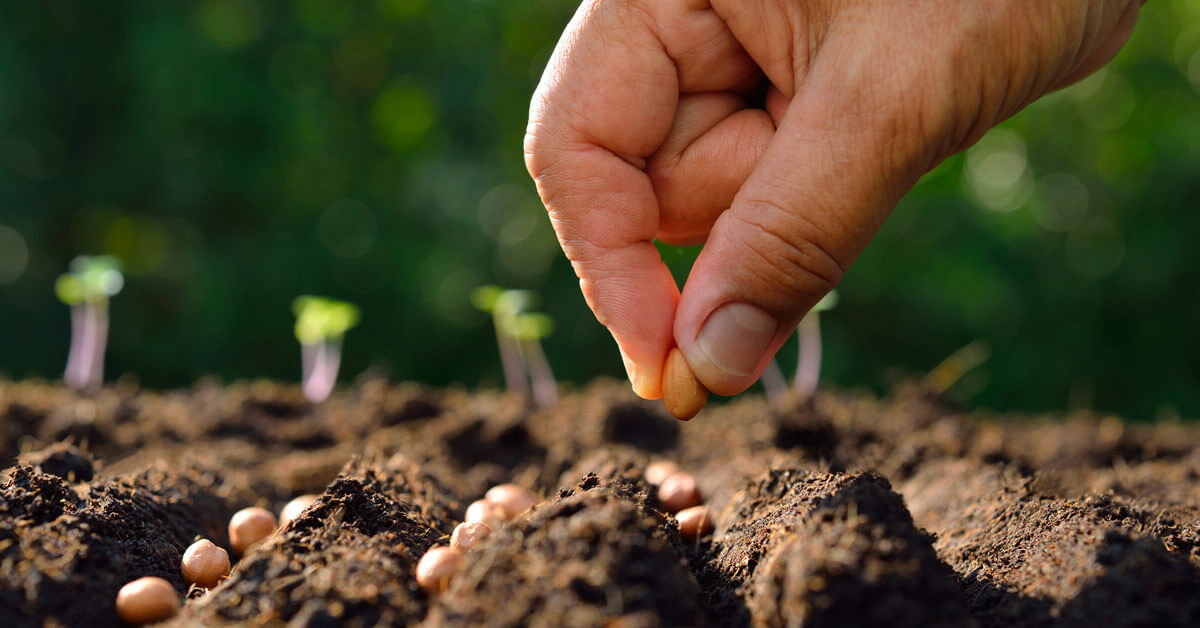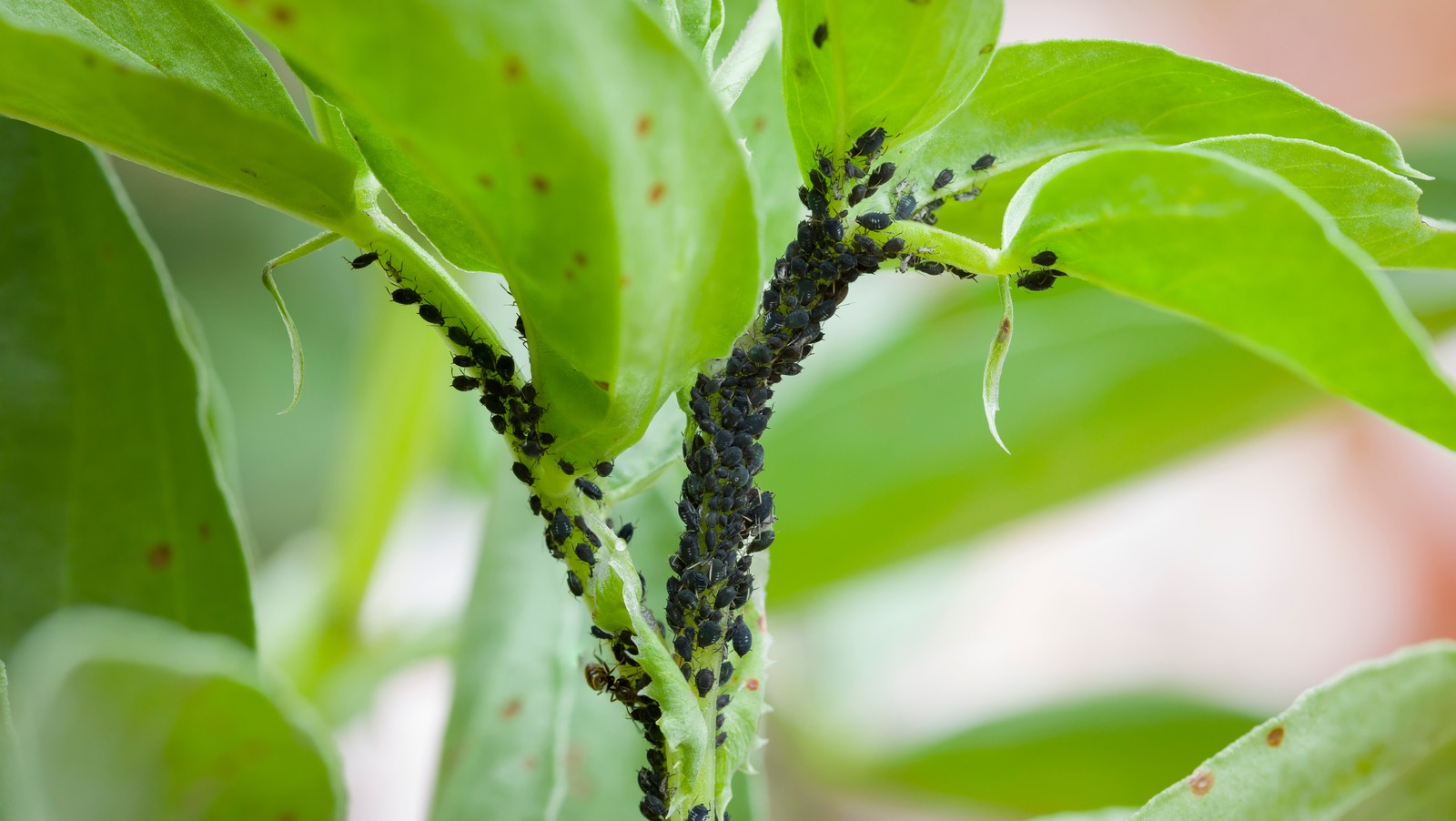Home>Gardening Tips and Tricks>Problem Solving>How To Keep Insects From Eating Vegetable Plants
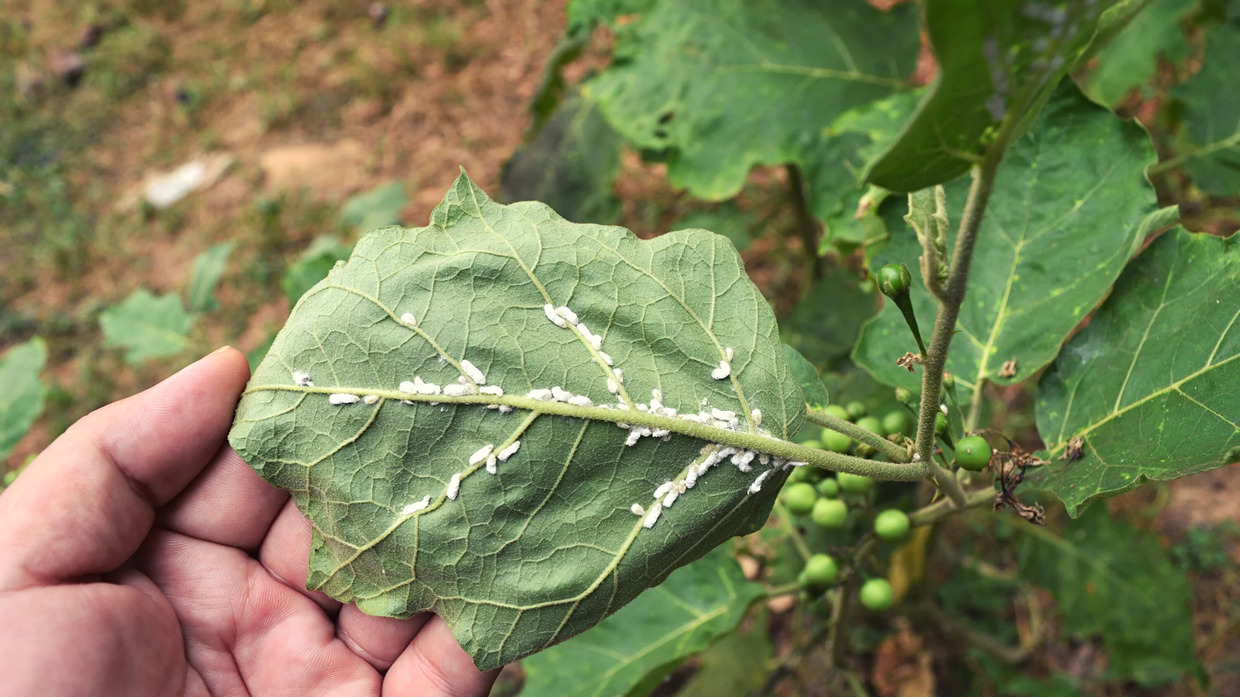

Problem Solving
How To Keep Insects From Eating Vegetable Plants
Modified: January 22, 2024
Learn effective problem-solving techniques to keep insects from devouring your vegetable plants. Take preventative measures and discover natural remedies to protect your garden.
(Many of the links in this article redirect to a specific reviewed product. Your purchase of these products through affiliate links helps to generate commission for Chicagolandgardening.com, at no extra cost. Learn more)
Table of Contents
- Introduction
- Understanding the Insect Threat
- Cultural Techniques to Prevent Insect Damage
- Companion Planting for Natural Insect Repellent
- Using Physical Barriers to Protect Vegetable Plants
- Organic Insecticides and Pest Control Methods
- Maintaining Proper Watering and Fertilization
- Common Insects and How to Identify Them
- Conclusion
Introduction
Welcome to our comprehensive guide on how to keep insects from eating your precious vegetable plants. If you’re an avid gardener, you know all too well the frustration of spending hours tending to your plants only to find them ravaged by pesky insects. Insects can quickly decimate your vegetable garden, causing significant damage to your crops and diminishing your harvest. However, with the right strategies and techniques, you can protect your plants and enjoy a bountiful harvest.
In this guide, we will explore various methods to prevent insect damage to your vegetable plants. We will delve into cultural techniques, such as proper garden maintenance and sanitation, which can help create an environment that is less attractive to insects. We will also discuss the concept of companion planting, where certain plants are grown together to naturally repel harmful insects.
In addition, we will explore the use of physical barriers, such as row covers and netting, to physically prevent insects from reaching your plants. We will also delve into the realm of organic insecticides and pest control methods, which provide effective alternatives to synthetic chemicals.
Furthermore, we will emphasize the importance of proper watering and fertilization in maintaining healthy plants that are more resistant to insect damage. By understanding the basics of insect identification, you will be better equipped to identify the specific pests and take appropriate action.
Whether you’re a seasoned gardener or just starting out, this guide will provide you with valuable insights and practical tips to protect your vegetable plants from insect invaders. By following these strategies and techniques, you can enjoy a thriving garden and savor the fruits of your labor. So, let’s embark on this journey together and create a garden that is both beautiful and pest-free!
Understanding the Insect Threat
Before we dive into the various methods of preventing insect damage, it’s important to understand the types of insects that pose a threat to your vegetable plants. Insects can cause significant damage by feeding on the leaves, stems, and fruits of your plants, thereby inhibiting their growth and reducing overall yield.
Common insect pests in vegetable gardens include aphids, caterpillars, beetles, and mites, among others. These pests can cause wilting, yellowing, stunted growth, and deformities in your plants. They can also transmit diseases from one plant to another, leading to further damage.
It’s crucial to be able to identify these pests in order to effectively implement control measures. Regularly inspect your plants for signs of insect activity, such as chewed leaves, webbing, or clusters of insects. Use a magnifying glass if needed to get a closer look at the critters.
Once you have identified the pests, research their specific behaviors and life cycles. Understanding their life cycles will allow you to target them at their most vulnerable stage and disrupt their population growth effectively. Some insects lay eggs on the underside of leaves, while others may hide in the soil during specific stages of their life cycle.
It’s also important to note that not all insects in your garden are harmful. Some insects, such as ladybugs and lacewings, are beneficial as they prey on harmful pests. Encouraging these helpful insects to take up residence in your garden can help reduce the overall pest population.
Remember, prevention is always better than cure when it comes to insect pests. By implementing proactive measures, you can reduce the likelihood of infestations and minimize potential damage to your vegetable plants.
In the next section, we will explore various cultural techniques that can help prevent insect damage in your vegetable garden. These techniques focus on creating a healthy, inhospitable environment for pests and promoting the overall well-being of your plants.
Cultural Techniques to Prevent Insect Damage
When it comes to preventing insect damage in your vegetable garden, implementing cultural techniques can make a significant difference. These techniques involve proper garden maintenance and sanitation practices that create an environment that is less attractive to insects. By following these practices, you can promote the overall health of your plants and discourage infestations.
One of the key cultural techniques is crop rotation. Rotating your crops from one planting area to another each season helps to disrupt the life cycles of insect pests. Many insects have specific host plants that they prefer, so by moving crops around, you can confuse and deter these pests. Additionally, rotating crops can help to prevent the buildup of pests and diseases in the soil.
Another important technique is regular weeding. Weeds not only compete with your vegetable plants for nutrients and water, but they can also harbor pests and diseases. By keeping your garden free of weeds, you reduce the potential hiding places and food sources for insects.
Maintaining proper plant spacing is also essential. Overcrowding plants can create an environment that is conducive to the spread of pests and diseases. Good air circulation between plants helps to dry foliage, making it less prone to fungal diseases and less attractive to certain insects.
Promptly removing and disposing of any diseased or infested plant material is crucial. Insects and diseases can overwinter on debris left in the garden, ready to infest your plants the following season. Proper sanitation practices help prevent the carryover of pest problems from one season to another.
Regularly inspecting your plants for signs of insect activity is important for early detection and intervention. Check both the upper and lower surfaces of leaves, as some pests, like aphids, prefer to feed on the undersides. Taking action as soon as you notice any signs of insect damage can prevent infestations from spreading and causing widespread harm.
Encouraging beneficial insects is another cultural technique to consider. Planting flowers that attract pollinators, such as bees and butterflies, can help to create a balanced ecosystem in your garden. These beneficial insects prey on pests, reducing their numbers naturally. Additionally, providing shelter and water sources for beneficial insects can help to encourage their presence.
By employing these cultural techniques, you can create a garden environment that is less attractive to insects and more conducive to healthy plant growth. However, there are additional strategies that can be implemented to further protect your vegetable plants from insect damage, which we will explore in the next sections.
Companion Planting for Natural Insect Repellent
Companion planting is an age-old practice that involves planting certain plant species together to create a natural defense against insect pests. By strategically selecting companion plants, you can benefit from their ability to repel or deter insects, reducing the need for chemical insecticides.
One common example of companion planting for insect repellent is planting marigolds alongside your vegetable plants. Marigolds emit a strong fragrance that repels many insect pests, such as aphids and nematodes. Planting marigolds between rows or as a border around your vegetable garden can help to keep these pests away.
Another effective companion plant is basil. Not only does basil add flavor to your culinary creations, but it also repels flies, mosquitoes, and a variety of other insects. Planting basil alongside your tomatoes, peppers, or other susceptible plants can help to keep pests at bay. Plus, you’ll have fresh basil on hand for cooking!
Nasturtiums are another popular companion plant with insect-repellent properties. Their vibrant flowers not only add beauty to your garden but also repel aphids, whiteflies, and squash bugs. Interspersing nasturtiums among your vegetable plants can help protect them from these common pests.
Garlic is known for its pungent aroma and is a powerful natural insect repellent. Planting garlic near vulnerable plants can help repel aphids, Japanese beetles, and other troublesome insects. You can also utilize garlic sprays or garlic-infused water to further protect your plants.
Lavender is not only fragrant and visually appealing but also acts as a natural deterrent for fleas, moths, and mosquitoes. Planting lavender near your vegetable garden can create a barrier against these pests while adding a touch of beauty and elegance to your outdoor space.
Companion planting also extends beyond repelling insects. Some companion plants attract beneficial insects that prey on harmful pests. For example, planting dill or fennel can attract beneficial insects such as ladybugs and lacewings, which feed on aphids and other soft-bodied pests.
It’s important to note that not all plants make good companions for each other. Some plants may compete for nutrients or attract pests that can damage your vegetables. Researching and planning your companion planting combinations is key to maximizing the benefits and avoiding any negative interactions.
By incorporating companion planting techniques into your vegetable garden, you can naturally repel insect pests and create a harmonious and balanced ecosystem. The next section will explore the use of physical barriers as an additional method of protecting your vegetable plants from insect damage.
Using Physical Barriers to Protect Vegetable Plants
When it comes to protecting your vegetable plants from insect damage, physical barriers can be highly effective. These barriers create a physical barrier between your plants and the invading pests, preventing them from reaching and causing harm to your crops.
One common type of physical barrier is row covers. These lightweight, translucent fabrics are placed directly over your plants, creating a barrier that allows sunlight, water, and air to pass through while keeping insects out. Row covers can be used to protect plants from a variety of pests, including aphids, cabbage worms, and moths.
Another effective physical barrier is netting or mesh. This is particularly useful for crops that are prone to bird or small animal damage. By covering your vegetable plants with netting, you can prevent birds from pecking at your ripe tomatoes or squirrels from nibbling on your cucumber vines. Make sure the mesh is small enough to exclude the targeted pests while still allowing adequate airflow.
If you’re dealing with larger pests like rabbits or deer, a sturdy fence around your garden can act as a physical barrier. Ensure that the fence is tall enough and has a secure structure to deter these animals from accessing your vegetable plants. Additionally, burying the fence at least 6 inches deep can help prevent burrowing pests from tunneling under the barrier.
For plants that are susceptible to crawling insects, such as slugs and snails, creating a physical barrier around individual plants can be effective. Options include using copper tape or collars made from materials like cardboard or plastic to create a barrier that these pests will be reluctant to crawl over.
It’s important to regularly monitor your physical barriers for any damage or signs of wear. Small tears or openings can allow insects to infiltrate, rendering the barriers ineffective. Promptly repair any damage or replace worn-out barriers to maintain their effectiveness.
While physical barriers can be highly effective in preventing insect damage, they may also have some drawbacks. For instance, row covers and netting can limit pollination by bees and other beneficial insects. To mitigate this, you can temporarily remove the barriers during flowering periods or manually pollinate the plants using a soft brush.
By incorporating physical barriers into your pest management strategy, you can create a formidable defense against a wide range of insect pests. However, there are also organic insecticides and pest control methods available to provide additional protection to your vegetable plants, which we will explore in the next section.
Organic Insecticides and Pest Control Methods
When facing persistent insect pest problems in your vegetable garden, organic insecticides and pest control methods can provide effective and environmentally friendly solutions. These methods focus on using natural substances and techniques to repel or eliminate pests while minimizing harm to beneficial insects and the overall ecosystem.
One popular organic insecticide is neem oil. Derived from the seeds of the neem tree, neem oil acts as both a repellent and an insect growth regulator. It can effectively deter a wide range of pests, including aphids, whiteflies, and caterpillars. Dilute neem oil according to the instructions on the packaging and apply it to your plants as a spray.
Diatomaceous earth is another natural pest control method. This fine powder is composed of the fossilized remains of microscopic algae and has sharp edges that cut through the protective exoskeleton of insects, causing them to dehydrate and die. Sprinkle diatomaceous earth around the base of plants or directly on the pests to keep them at bay.
For controlling soft-bodied pests like aphids, a simple homemade insecticidal soap can be highly effective. Mix one tablespoon of mild liquid soap, such as Castile soap, with one quart of water. Spray this solution onto the affected plants, ensuring thorough coverage of the pests. The soap disrupts the pests’ cell membranes, leading to their demise.
Companion planting, as mentioned earlier, is also an effective organic pest control method. By strategically planting certain companion plants, you can repel or attract beneficial insects that prey on pest insects. Some examples include planting garlic to repel aphids or attracting ladybugs by planting flowers like dill or yarrow.
Introducing beneficial insects into your garden is another organic approach. Purchasing and releasing beneficial insects like ladybugs, lacewings, or predatory mites can help to naturally control pest populations. Just ensure that your garden provides suitable habitat and food sources for these beneficial insects to thrive.
Physical methods, such as handpicking pests or using traps, can also be effective in organic pest control. Regularly inspect your plants and manually remove any visible pests, such as caterpillars or beetles. Additionally, traps like sticky yellow cards can attract and capture flying insects like whiteflies and fungus gnats.
It’s worth noting that organic pest control methods may require more frequent application or a combination of techniques to achieve optimal results. Remember to follow the instructions on product labels and ensure that any substances used are certified for organic gardening.
By utilizing these organic insecticides and pest control methods, you can effectively manage pest problems in your vegetable garden while minimizing the impact on beneficial insects and the environment. However, maintaining proper watering and fertilization practices can also play a significant role in preventing insect damage, as we will explore in the next section.
Maintaining Proper Watering and Fertilization
Proper watering and fertilization play a crucial role in maintaining the health and vitality of your vegetable plants. By providing the right amount of water and nutrients, you can help your plants grow strong, resist insect damage, and recover more quickly from any stress they may encounter.
When it comes to watering, consistency is key. Most vegetable plants require approximately 1 inch of water per week, either from rainfall or supplemental irrigation. However, this can vary depending on factors such as the plant species, soil type, and weather conditions. It’s essential to monitor the moisture levels in your soil and adjust watering accordingly.
Water your plants deeply and infrequently rather than shallowly and frequently. This encourages deep root growth and helps plants withstand drought conditions. To determine when to water, check the soil moisture level by inserting your finger into the soil up to the first knuckle. If it feels dry at this depth, it’s time to water.
Avoid overwatering, as it can lead to waterlogged soil, root rot, and other diseases. Additionally, overwatered plants may become weaker and more susceptible to pest infestations. Be mindful not to wet the foliage excessively, as this can create a favorable environment for fungi and other diseases to thrive.
Fertilization provides essential nutrients that plants need for healthy growth and development. Applying organic fertilizers, such as compost or well-rotted manure, can help enrich the soil and provide a slow-release source of nutrients. These organic fertilizers also improve soil structure, moisture retention, and nutrient availability.
It’s important to use fertilizers in the proper amounts and at the right time. Before planting, incorporate compost or organic matter into the soil to improve its fertility. During the growing season, periodically top-dress your plants with organic fertilizers or use liquid organic fertilizers according to package instructions.
Over-fertilization can lead to excessive vegetative growth, which can attract insect pests. It can also negatively impact soil health and contribute to nutrient runoff, causing environmental harm. Follow the recommended application rates for fertilizers and be mindful of the specific nutrient needs of different vegetable plants.
Monitoring your plants for signs of nutrient deficiency or excess is essential. Yellowing leaves, stunted growth, and poor fruit development can indicate nutrient imbalances. Adjust your fertilization regimen accordingly, but always try to err on the side of caution to avoid overapplication.
By maintaining proper watering and fertilization practices, you can provide your vegetable plants with the essential resources they need to thrive. Healthy plants are better able to withstand insect attacks and can recover more quickly when faced with pest damage. However, it’s also important to be able to identify common insects and pests in order to take appropriate action, which we will explore in the next section.
Common Insects and How to Identify Them
To effectively protect your vegetable plants from insect damage, it’s essential to be able to identify common insects and pests that may infest your garden. By recognizing the signs and characteristics of these pests, you can take appropriate action to control their populations and minimize the harm they cause to your crops.
Aphids are one of the most common garden pests. These small, pear-shaped insects cluster on the undersides of leaves and feed on plant sap. They can cause distorted growth, yellowing leaves, and the presence of sticky honeydew. Aphids come in various colors, including green, black, and brown.
Caterpillars, such as the familiar cabbage worms and tomato hornworms, are voracious eaters that can quickly defoliate your plants. They have soft, segmented bodies and can be various colors, often blending in with the foliage. Look for their feeding damage and the presence of chewed leaves or frass (caterpillar droppings).
Beetles, like the notorious Japanese beetles and Colorado potato beetles, can wreak havoc on your plants. These insects have hard, shiny bodies and can vary in size and color. They typically chew on leaves and flowers, leaving behind irregularly shaped holes or skeletonized foliage.
Spider mites are tiny pests that are difficult to spot with the naked eye. They often reside on the undersides of leaves and cause damage by sucking sap from the plant. Infested leaves may appear speckled, yellowed, or bronzed. You may also notice fine webbing around the affected foliage.
Whiteflies are small, moth-like insects that congregate on the underside of leaves, especially in warm weather. They have white wings and can easily be disturbed when the plant is disturbed. Whiteflies suck plant juices, causing leaves to become yellow and distorted. Their feeding can also lead to the development of sooty mold.
Thrips are slender insects that are barely visible to the naked eye. They have fringed wings and often feed on flower buds and young leaves. Thrips can cause silvery stippling, curled leaves, and distorted growth. Additionally, their feeding can transmit certain viral diseases to your plants.
These are just a few examples of the many pests that may threaten your vegetable plants. When identifying pests, it’s helpful to inspect both the upper and lower surfaces of leaves, check for telltale signs of feeding or damage, and search for the presence of eggs or larvae.
Use resources such as identification guides, gardening books, or online sources to aid in pest identification. Local garden centers or cooperative extension offices can also provide valuable assistance in identifying insects specific to your region.
Once you have identified the pests in your garden, you can choose the most appropriate control measures, whether it be physical barriers, organic insecticides, companion planting, or other methods, to address the specific pest infestation and protect your vegetable plants.
In the next section, we will conclude this guide with a recap of the key points discussed and provide some final thoughts on effectively keeping insects from eating your vegetable plants.
Conclusion
Protecting your vegetable plants from insect damage requires a comprehensive approach that combines various strategies and techniques. By implementing cultural techniques such as crop rotation, regular weeding, and maintaining proper plant spacing, you can create an environment that is less attractive to pests and promotes overall plant health.
Companion planting with insect-repellent plants and using physical barriers like row covers and netting can provide additional layers of defense against insect pests. These methods help to deter pests and prevent them from directly accessing your vegetable plants.
Organic insecticides and pest control methods offer effective alternatives to synthetic chemicals. Substances like neem oil, diatomaceous earth, and insecticidal soaps can repel or eliminate pests while minimizing harm to beneficial insects and the environment.
Maintaining proper watering and fertilization practices is crucial in keeping your plants healthy and resilient to insect attacks. By providing adequate water and essential nutrients, you can create conditions that support strong plant growth and reduce the risk of infestations.
Identifying common insects and pests in your garden is essential for effective pest management. By recognizing the signs and characteristics of these pests, you can take timely action to control their populations and minimize the damage they cause to your vegetable plants.
In conclusion, protecting your vegetable plants from insect damage is a multifaceted task that requires a combination of proactive measures. By incorporating cultural techniques, utilizing companion planting, employing physical barriers, and implementing organic pest control methods, you can create a garden environment that is inhospitable to pests and encourages healthy plant growth.
Remember to stay vigilant in monitoring your plants for signs of pest activity and intervene as soon as you notice any problems. By taking proactive measures to deter and manage insect pests, you can enjoy a thriving vegetable garden that yields a bountiful and pest-free harvest.
